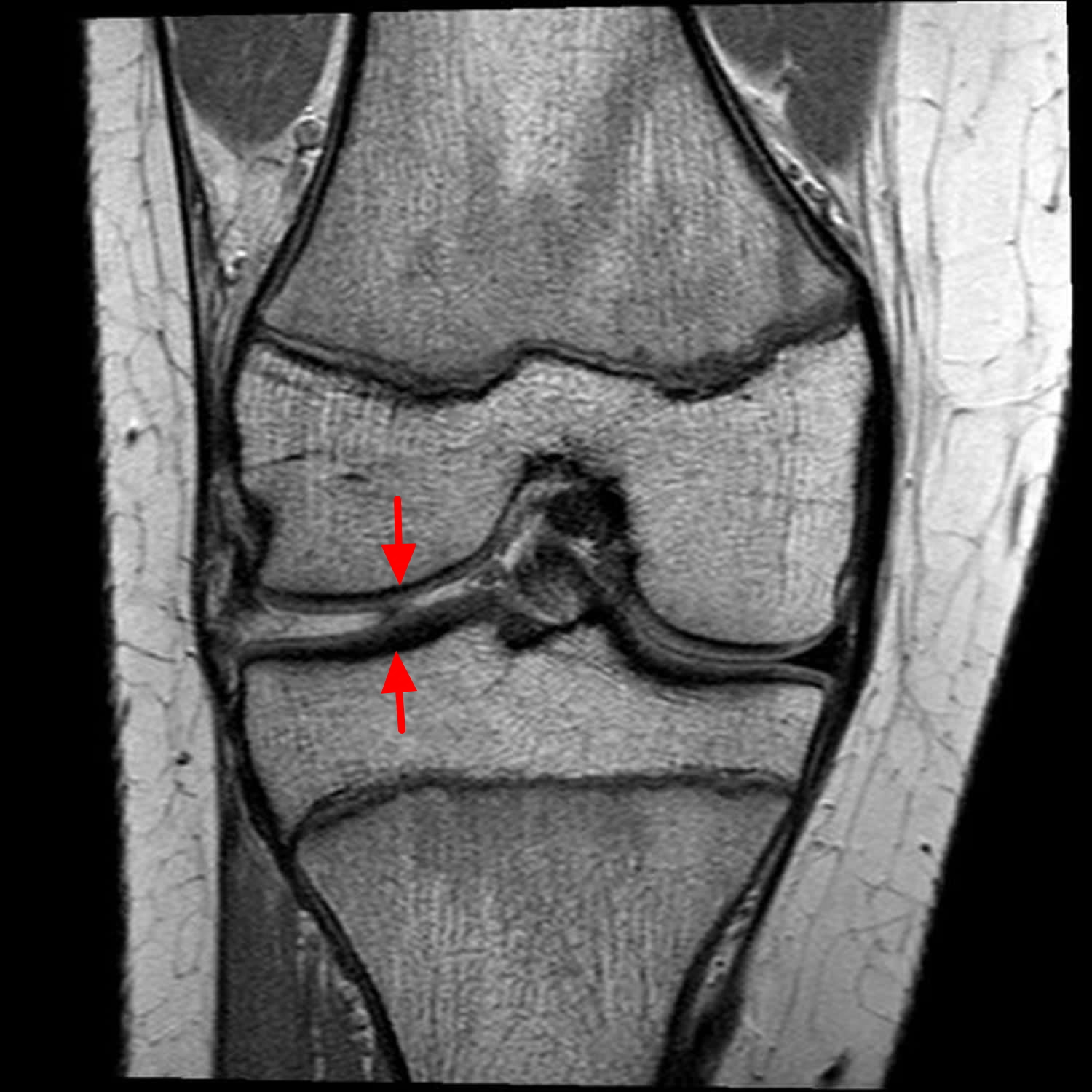Anatomy and Function of the Meniscus

Imagine your knee joint as a complex, intricate machine, and the meniscus is like a shock absorber and a stabilizer, working tirelessly to keep everything running smoothly. It’s a crucial part of the knee, playing a vital role in its functionality.
Structure and Location of the Meniscus
The meniscus is a C-shaped piece of cartilage found within the knee joint. It acts as a cushion between the thighbone (femur) and the shinbone (tibia). The meniscus is made up of two distinct parts: the medial meniscus and the lateral meniscus.
Types of Menisci and Their Functions, Torn meniscus
- Medial Meniscus: Located on the inner side of the knee, it’s larger and more C-shaped than the lateral meniscus. It’s attached to the medial collateral ligament, which helps stabilize the knee. The medial meniscus is also responsible for distributing weight evenly across the knee joint and absorbing shock.
- Lateral Meniscus: Situated on the outer side of the knee, it’s smaller and more circular than the medial meniscus. It’s less firmly attached to the surrounding structures and has greater mobility compared to the medial meniscus. The lateral meniscus also contributes to weight distribution and shock absorption.
Role of the Meniscus in Load Bearing, Shock Absorption, and Joint Stability
The meniscus plays a critical role in supporting the knee joint by:
- Load Bearing: The menisci help distribute weight evenly across the knee joint, reducing stress on the cartilage and bone. They act as shock absorbers, preventing excessive pressure on the joint during activities like walking, running, and jumping.
- Shock Absorption: The meniscus’s cartilage structure helps to absorb impact forces, protecting the joint from wear and tear. They cushion the joint surfaces during movement, preventing bone-on-bone friction.
- Joint Stability: The menisci contribute to the stability of the knee joint by providing a tight fit between the femur and tibia. They act as a buffer, preventing the bones from grinding against each other.
Symptoms and Diagnosis of a Torn Meniscus

A torn meniscus can be a real pain, literally! It’s a common injury, especially for athletes and those who enjoy a bit of active lifestyle. Knowing the signs and how to get a diagnosis is crucial for getting the right treatment.
Symptoms of a Torn Meniscus
The symptoms of a torn meniscus can vary depending on the severity of the tear. Some people may experience only mild pain, while others may have severe pain and difficulty walking. Common symptoms include:
- Pain: You might feel a sharp, sudden pain in your knee, especially when you twist or rotate your knee. The pain may be localized to the inner or outer part of the knee, depending on the location of the tear.
- Swelling: Your knee may swell up quickly after the injury, and the swelling may persist for several days or weeks.
- Clicking or popping: You may hear a clicking or popping sound in your knee when you bend or straighten it.
- Locking: Your knee may feel like it’s locked in place, making it difficult to bend or straighten.
- Stiffness: Your knee may feel stiff, especially after a period of inactivity.
- Difficulty walking: You may have trouble walking or putting weight on your injured knee.
Diagnosis of a Torn Meniscus
If you suspect you might have a torn meniscus, it’s important to see a doctor. They will ask about your symptoms, review your medical history, and perform a physical exam.
- Physical examination: Your doctor will examine your knee, checking for tenderness, swelling, and range of motion. They may also perform specific tests, such as the McMurray test, to assess the stability of your knee and check for a torn meniscus.
- Imaging tests: Imaging tests, such as an MRI (magnetic resonance imaging), can help confirm the diagnosis and determine the severity of the tear. An MRI provides detailed images of the soft tissues in your knee, including the meniscus.
- Arthroscopy: In some cases, your doctor may recommend an arthroscopy to further evaluate the tear and repair it if necessary. Arthroscopy is a minimally invasive surgical procedure that involves inserting a small camera and surgical instruments into the knee joint.
Misdiagnosis of a Torn Meniscus
Sometimes, a torn meniscus can be mistaken for other knee conditions, such as:
- Ligament injuries: A torn ligament, such as the ACL (anterior cruciate ligament) or PCL (posterior cruciate ligament), can cause similar symptoms to a torn meniscus.
- Arthritis: Osteoarthritis, a degenerative joint disease, can cause pain and swelling in the knee. It’s important to rule out arthritis if you’re experiencing knee pain, especially if you’re older.
- Bursitis: Bursitis is inflammation of the fluid-filled sacs (bursae) that cushion the joints. Bursitis can cause pain and swelling in the knee, similar to a torn meniscus.
